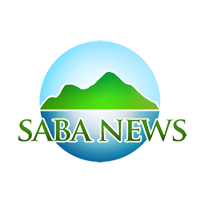The Saba Bank lies about 4.3 km southwest of the island of Saba. It rises from about 1000 m above the general depths of the surrounding sea floor. The Saba Bank is the largest submarine atoll in the Atlantic Ocean and the fifth largest of its kind in the world. It covers an area of 2600 km2 and has some of the richest diversity of marine life in the Caribbean Sea. In 2010 it was designated as “Saba Bank National Park”, and it was officially recognized as a national park in 2012 by the Kingdom of the Netherlands, soon followed with the recognition as an Ecologically Significant Marine Area by the Convention on Biological Diversity in 2013. The National Park was established to provide protection to the biodiversity of the bank.

The marine life there consists of more than 20 species of whales and dolphins, sharks, sea turtles, over 200 species of fish, and many kinds of seabirds. The bank is highly valued to other nearby reefs, acting as a source of coral and fish larvae that spread to coral reefs in the region. The Saba Bank is considered as an important breeding and calving area for the migration of humpback whales, but also as a breeding ground for shark species.
About one-third of the Saba Bank lies within the Saba territorial waters; the rest falls within the Exclusive Economic Zone, which is the jurisdiction of the national government of The Netherlands. The management of the Saba Bank dates back to 1994 and the declaration of the Exclusive Fishery Zone in the Dutch Caribbean and the passing of a national fishery ordinance made it illegal for foreign vessels to fish on the Bank without a license. In the past substantial damage was caused to the sea bed of the Saba Bank by shipping traffic, particularly tankers bound for the St. Eustatius Oil Terminal (established in 1982), which routinely anchors on the Bank. This threat to the Saba Bank was finally ended when it was declared a Nature Park in December 2010 and in 2012 it became the world’s 13th Particularly Sensitive Sea Area, giving it an International Maritime Organization designation as a no-anchoring area as well as an Area to Be Avoided by shipping of larger than 300GT. That same year it was recognized as an area of regional importance by the Specially Protected Areas and Wildlife Protocol. In September 2015, the Saba Bank became part of the Yarari Marine Mammal and Shark Sanctuary covering all waters of Saba, St Eustatius, and Bonaire.
In 2012 the Saba Bank Management Unit was established by the Dutch Ministry of Economic Affairs, in close co-operation with the Saba Conservation Foundation and the Saba Island Government. Since its establishment in 2012, the SBMU has been responsible for the day-to-day management of the Saba Bank. The SBMU is a separate unit within the Saba Conservation Foundation, with daily management by the Saba Conservation Foundation.
Saba Bank National Park

 Saba News News and Information from Saba Island, Dutch Caribbean
Saba News News and Information from Saba Island, Dutch Caribbean
